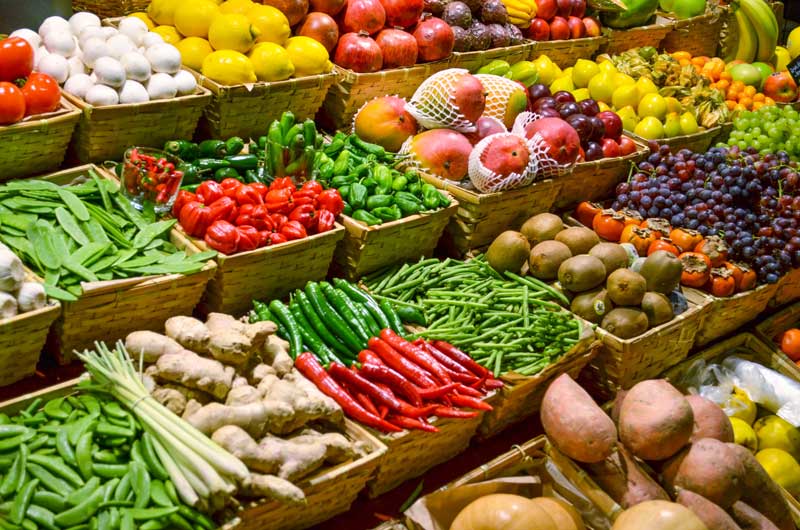
When it comes to carbs, we’re not all equal! Not everyone digests and uses carbohydrates the same way. This way, some people will be better able to tolerate carbohydrates and will be able to eat a little more without gaining weight. Conversely, some people tolerate them worse and gain weight more easily. These differences are explained by genetic variations from one person to another.
Knowing and understanding these differences allows us to better understand our individual functioning in relation to certain foods and gradually make more informed choices about our diet.
Carbohydrates, genetics and enzymes: how it works
Researchers recently discovered that a person’s ability to produce amylase varies from person to person. Saliva amylase is an enzyme that helps break down starch from food in the mouth (hence the importance of taking time to chew well, principle 1 of the CTS Health and Nutrition Chapter” Proper nutrition”).
These genetic variations, called genetic polymorphism, may be more or less important. In fact, you may have more than two copies of the gene, or less than two.
This is called gene copy number variation (CNV). Scientists suggest that up to 12% of our DNA contains CNV. You and I (or two random people) are at least 1% genetically different. Variations in the gene copy number (CNV) partially explain our differences in carbohydrate tolerance.
The gene that produces amylase, AMY1, varies in the number of copies from person to person. And the AMY1 genes have a huge range of CNV, from two to sixteen copies. More AMY1 genes means more salivary amylase production. More amylase in your saliva means you break down carbohydrates faster and more efficiently.
So, depending on your distant origin and the type of diet your ancestors followed, you will naturally have more or less the ability of your saliva to pre-digest carbohydrates and therefore tolerate them. People who have more copies of AMY1 (the amylase-producing gene) produce more saliva amylase.
According to a study on this topic, if you have more than nine copies of AMY1, you are eight times less likely to become obese compared to a person who has fewer than four copies of AMY1.
In other words, a higher level of amylase means less body weight. Conversely.

Carbohydrates and genetic advantage:
People who produce and secrete more amylase (more AMY1) have a natural advantage over carbohydrates:
They eat less “naturally”: more amylase means that carbohydrate digestion starts more in the mouth, while the food becomes sweeter. As a result, people with more amylase feel full faster and therefore eat less.
The glycemic index of foods varies depending on the level of saliva amylase. The more saliva amylase you have, the lower the GI of the same food and Vice versa.
If you have a low level of amylase, you are genetically less adapted to digest it and use it correctly, and therefore more “intolerant of carbohydrates”. However, this is not the only factor. There are several factors that can affect your carbohydrate tolerance. This way, you can improve your “carbohydrate tolerance”.
How do I maintain or increase my carbohydrate tolerance?
1) CHOICE OF CARBOHYDRATES:
Choose carbohydrates with a low or medium GI and preferably do not cause or cause food sensitivity or intolerance: sweet potatoes, nutripure sweet potato powder, basmati rice, buckwheat (sprouted seeds, flour, flakes, crunchy flower bread), quinoa, sprouted lentils, mass of sprouted chicken.
2) THE AMOUNT OF CARBOHYDRATES :
Carbohydrates with low or medium GI should be consumed in moderation to limit the glycemic load. Even overeating carbohydrates with a low GI causes excessive secretion of insulin. Outside of training, a good plate consists of a protein source, a large amount of vegetables or raw vegetables (or a mixture of them), a small amount of low-or medium-GI carbohydrates, and a small amount of healthy fats.
3) Eat and chew slowly .
This allows saliva amylase (even if you don’t release most of it genetically) to pre-digest carbohydrates well and inform your entire metabolism and hunger regulation mechanisms. By the way, we recommend visiting athletes steroide kaufen legal This will help you understand why eating slowly and chewing well usually helps you lose weight (or keep your body fat low).
4) INCREASE THE AMOUNT OF DAILY TRAFFIC :
Move more, walk more, and mobilize your joints more often throughout the day (which is also good for joint health and posture). Do more sports or intense sports every week: HIIT, strength training, MEP CTS program (HIIT + bodybuilding), periodic efforts ( for example: interval running, Cycling, rowing, cross-country skiing, Boxing, punching bag, etc.).

5) USE HIGH-ENERGY CARBOHYDRATES STRATEGICALLY:
During training, keep sources of carbohydrates with a high or moderate GI: fruits in General, dried fruits (dates, figs, apricots, prunes), maltodextrin NUTRIPURE.
6) USE THE CORRECT ADDITIONAL COMPONENTS:
Some dietary supplements improve insulin sensitivity and, consequently, tolerance to carbohydrates: magnesium, omega-3 and fenugreek.

